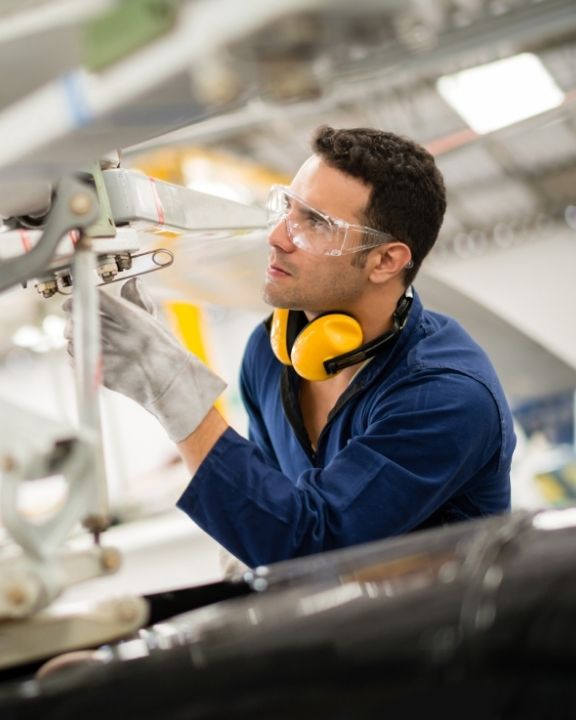New Zealand has a rich history of aerospace innovation, from the celestial navigation techniques of early Māori explorers to the cutting-edge technologies developed by modern companies like Rocket Lab, Dawn Aerospace, and Merlin Labs.
This article explores key moments in that journey and what it can teach modern aerospace companies about how the protection, recognition, and strategic use of intellectual property (IP) can help turn Kiwi ingenuity into global aerospace success.
Celestial Navigators: Polynesian Wayfinding and Māori Knowledge
Polynesian explorers, including the ancestors of Māori, were among the world’s greatest navigators, crossing the Pacific long before modern instruments were developed. They navigated without compass or GPS, using clues from the environment: the rising and setting of stars, the sun’s and moon’s positions, ocean swells and currents, winds, and even wildlife[1]. By memorising star paths (using a “star compass”) and reading wave patterns, they were able to maintain course over the open ocean with astonishing accuracy. This body of knowledge, known as mātauranga Māori in New Zealand, was preserved and passed down orally through generations.
Today, New Zealand recognises the value of this traditional knowledge as a national treasure. The Intellectual Property Office of New Zealand (IPONZ) notes that mātauranga Māori is a taonga (treasure), and modern IP laws include provisions to respect and protect it[2].
This demonstrates an important point: not all IP is registrable like patents and trade marks. Some IP, like Polynesian navigation techniques, is not formally recorded but such “know-how” can still have significant use and value, and needs to be nurtured. Just as the Polynesians carefully passed their knowledge down through generations, modern aerospace companies should consider what know-how they have and how it can be preserved.
Early Flight Experiments: Richard Pearse’s Innovation Ahead of Its Time
At the dawn of the 20th century, a Kiwi farmer-inventor named Richard Pearse epitomised New Zealand’s inventive spirit. Working on his remote South Canterbury farm, Pearse built and tested flying machines around the same time as the famous Wright Brothers. Pearse engineered a bamboo-and-wire monoplane with a lightweight two-cylinder engine of his own design, featuring advanced concepts like ailerons (wing flaps) and tricycle landing gear[3].
Despite his technical ingenuity, Pearse’s story illustrates how innovation and IP alone are not enough to obtain commercial success, and other factors are also vital. Although Pearse secured a New Zealand patent for his “Improved Aerial or Flying Machine” in the early 1900s[4], his isolation meant the invention received little attention. With no public acclaim and limited publication or reporting at the time, his work had minimal impact on the emerging global aviation industry.
Pearse’s legacy is bittersweet, as on one hand he stands as an unsung pioneer of flight, embodying Kiwi creativity and perseverance. On the other, it underscores the importance of timing and communication in innovation. A patent secured Pearse a technical claim to his invention, but without early publicity or an effective commercial strategy, his ideas nearly vanished. It’s a reminder to modern aerospace innovators that protecting your invention (through patents or other IP) is only part of the journey and it is also necessary to have a clear commercial strategy to so that technology isn’t lost to history.
Reaching for the Stars: Bill Pickering and the Space Age
Fast forward to the mid-20th century, and New Zealand’s influence on aerospace leapt from lonely farm paddocks to the global stage of the Space Race. William “Bill” Pickering, a Wellington-born engineer, became a key figure in American space exploration. After studying electrical engineering and physics at the University of Canterbury, then at Caltech in the US, Pickering rose to lead NASA’s Jet Propulsion Laboratory (JPL) in California from 1954 to 1976[5].
Under his directorship, JPL and the U.S. Army team launched Explorer 1 in 1958, the first United States satellite to orbit Earth. This achievement marked the U.S. entry into the Space Age, just months after the Soviet Union’s Sputnik, and it thrust Pickering into the spotlight as “the face of the space race” for America. Pickering’s time at NASA saw an incredible lineup of space “firsts.” He oversaw the development of robotic missions that travelled to the Moon, Venus, and Mars, including the Mariner probes and the initial Voyager project[6].
Even though NASA didn’t focus on patents during Pickering’s time, this did not mean its innovations had any less impact. The rapid pace of innovation during the Space Race led to countless technologies that found use far beyond space. Velcro, for instance was originally a Swiss invention from the 1940s and was widely adopted after astronauts used it to keep equipment in place in zero gravity. NASA’s own R&D also led to materials like memory foam, which was first developed at Ames Research Center in 1966 to make aircraft seats safer, and later became popular in bedding, sports gear, and medical products[7].
These examples show how technologies created for one purpose can be adapted into entirely different products or have application in fields not envisaged when the technology was first developed. An IP strategy should allow for this prospect, for example ensuring that patent rights are sufficiently broad to cover unforeseen applications.
While much of NASA’s research was openly shared, this didn’t rule out using IP protection where needed. In fact, by 1976, NASA had started releasing an annual Spinoff report to highlight how its space innovations were being commercialised in everyday life[8]. This mix of open science and selective IP use has since shaped how we think about research and development today, particularly in government labs working alongside industry. Pickering’s story shows that great ideas don’t always start with making money in mind. By following curiosity and a drive to explore, discoveries can lead to unexpected and wide-reaching benefits.
Launching into the Future: Rocket Lab’s Rise and Commercialisation
In the 21st century, New Zealand’s aerospace journey has accelerated, and is fast becoming a hub for aerospace innovation, led by Rocket Lab and joined by emerging players like Dawn Aerospace and Merlin Labs. These companies showcase how a supportive regulatory environment and strong IP strategies can turn Kiwi ingenuity into global success.
Rocket Lab set the foundation with its Electron rocket, launching from Mahia Peninsula since 2017. With dozens of missions completed, the company has attracted global investment and built a robust IP portfolio around its 3D-printed Rutherford engine and launch systems. Its success has helped shape a regulatory framework that now supports a broader aerospace ecosystem[9]. In addition to patents[10], Rocket Lab has secured trademarks for various aspects of its operations. The company has registered trademarks for names like ‘PHOTON’, and ‘CURIE’, which are associated with its brand and specific technologies[11]. These trademarks help in establishing brand identity and protecting the company’s market presence.
Dawn Aerospace, based in Christchurch, is developing the Mk-II Aurora: a rocket-powered, fully reusable spaceplane designed to fly to 100 km altitude and return within hours. The company also produces green satellite propulsion systems using non-toxic propellants. Dawn’s IP includes patented[12] propulsion technology and a unique regulatory approach that allows the Mk-II to operate under aircraft rules, enabling rapid turnaround without special airspace restrictions. Much of its testing is conducted in New Zealand, reinforcing the country’s role as a launchpad for innovation[13].
Merlin Labs, a US-based company, has chosen New Zealand to test its autonomous flight technology. In Kerikeri, the company operates pilotless Cessna aircraft using its proprietary “Merlin Pilot” AI system. With approvals from the NZ Civil Aviation Authority, Merlin is trialing autonomous cargo routes and collecting flight data to support certification abroad[14]. Its IP covers autonomous control systems and AI-driven avionics[15], and its presence in New Zealand demonstrates how local airspace and regulatory openness can accelerate cutting-edge aerospace development.
Together, companies like Rocket Lab, Dawn Aerospace, and Merlin Labs reflect the diversity of aerospace innovation in New Zealand, which ranges from orbital rockets to reusable spaceplanes and autonomous aircraft. Each company leverages IP, through patents, trade secrets, or branding, to protect and scale their technology. Combined with New Zealand’s flexible regulatory support and collaborative R&D environment, they are positioning New Zealand as a leader in next-generation aerospace.
From Stars to Satellites: Why IP Matters for Aerospace Innovators
New Zealand’s aerospace journey spans centuries, from Polynesian navigators charting courses by the stars, to Richard Pearse’s early flight experiments, to today’s aerospace companies pushing global boundaries. This legacy reflects a spirit of innovation deeply embedded in Aotearoa’s identity. It also shows that while creativity and technical skill are essential, an effective commercial strategy, including an intellectual property (IP) strategy is crucial to turning innovation into impact.
Each chapter offers lessons. Traditional navigation highlights the importance of stewardship of valuable information. Pearse’s overlooked achievements remind us that without visibility and a commercial strategy, even patented groundbreaking ideas can fade. In contrast, modern companies like Rocket Lab, Dawn Aerospace, and Merlin Labs have built success not just on engineering brilliance, but on strong commercial and IP strategies.
For today’s aerospace professionals, whether you’re developing navigational software, designing UAVs, or building launch platforms, understanding IP is vital. It allows you to collaborate securely, attract funding, and define your place in a competitive industry.
That might mean patenting propulsion innovations, protecting algorithms as trade secrets, or securing trade marks for your brand and payloads. In such a fast-evolving, global sector, smart IP planning isn’t just useful, it’s a strategic advantage. If you’re shaping the future of aerospace in New Zealand, it’s worth considering how IP can support your goals.
About the authors:
Jonathan Lucas is a partner of James & Wells based in Auckland. He has been a patent attorney for nearly 20 years. With his academic background in physics, he advises clients on IP protection in several different fields within the aerospace sector, including physics, mechanical engineering, electrical engineering and software.
Hemi Jones is a trainee patent attorney based in James & Wells’ Hamilton office. Hemi has a degree in mechanical engineering and spent several years working as an engineer in the aviation industry. He advises clients on patents in a variety of engineering fields.
[1] https://www.learnz.org.nz/location192/bg-standard-f/polynesian-navigation.
[2] https://www.iponz.govt.nz/get-ip/maori-ip/.
[3] https://nzhistory.govt.nz/culture/richard-pearse.
[4] New Zealand Patent No. 21476.
[5] https://pubs.aip.org/physicstoday/article/57/11/86/1016730/William-Hayward-Pickering
[6] https://www.engineeringnz.org/programmes/heritage/engineering-hall-fame/william-pickering-1910-2004/
[7] https://www.inventionandtech.com/content/nasa-spinoffs-fact-or-myth-2
[8] https://www.aipla.org/list/innovate-articles/found-in-space-patented-technologies-of-nasa-on-earth-and-beyond
[9] https://www.rocketlabusa.com/updates/rocket-lab-to-take-next-major-step-toward-electron-reusability-by-launching-pre-flown-engine/
[10] https://uspto.report/company/Rocket-Lab-Usa-Inc/patents
[11] https://trademarks.justia.com/owners/rocket-lab-usa-inc-3563559
[12] United States Patent No. 12116958.
[13] https://www.dawnaerospace.com/latest-news/rapidreusability
[14] https://www.flyingmag.com/merlin-labs-nabs-part-135-air-operator-certification-in-new-zealand/











